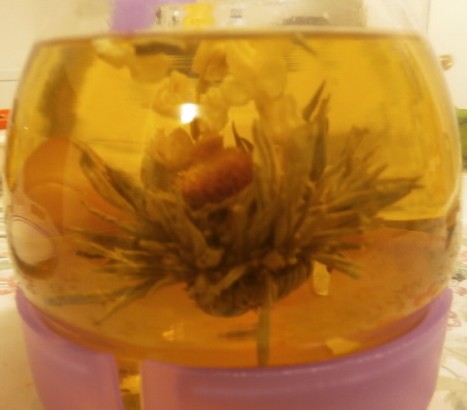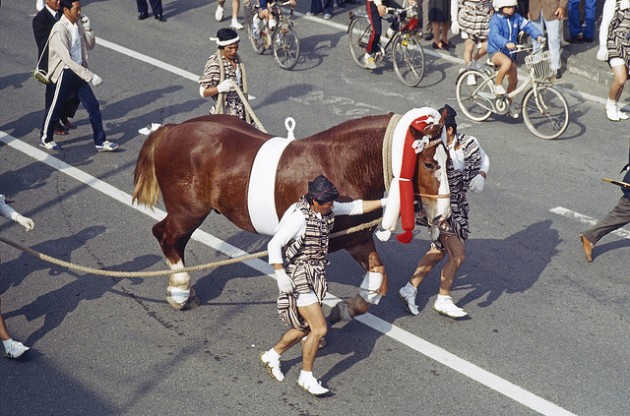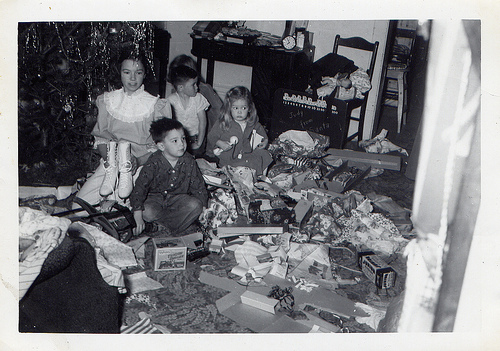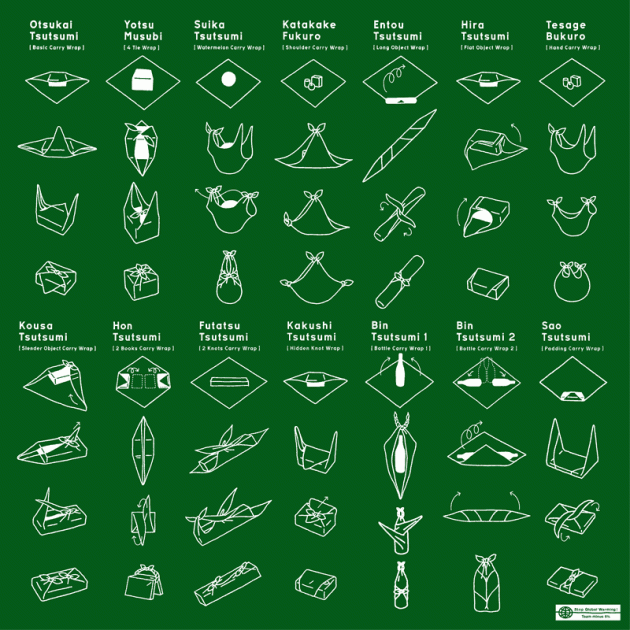Hiya, all! Still keeping your resolutions?
I think I had originally intended to post this yesterday, but…meh… Sorry there aren’t any in-process pictures, I was at a friend’s house and we forgot about the camera so these were taken with a phone.
We had a nice, relatively quiet party at a friend’s house and made sammiches, lots and lots of sammiches.

Everything but the drinks
And Ozoni soup! What’s ozoni? It’s a traditional Japanese soup that’s part of the Japanese New Year foods that are meant to bring good luck, etc. for the rest of the year.

You can’t see the carrot or greenery, but it’s in there!
Garnished with a bit of lime peel.
Mine followed the Southern Japanese tradition of using miso for the broth. We added carrots, tiny beech mushrooms, Shanghai Bok Choy (the only difference is it’s green all over instead of white stemmed with dark green leaves), renkon, boiled eggs and kamaboko (lovely fish cake that tastes very much like imitation crab meat) as well as a piece of roasted mochi. My Japanese friend told me that her family has a tradition of making a sweet version using adzuki beans. While I found this thoroughly amusing, the savory version seemed less likely to be messed up by a couple of half-drunk women in a kitchen.
As for the sandwiches: I was inspired by the cutter giveaway (previous post) and wanted to make lots of bite-sized munchies to stuff in our faces as we celebrated the new-year. We decided on 3 flavors:
The first is a salmon roll.

Lovely salmon rolls! Not exactly round, but delicious!
We mixed pre-cooked, packaged salmon with cream cheese, lemon salt, umeboshi (these are a GREAT, tart addition to tuna or salmon! -Please remove the pits first!-) and sun-dried tomatoes. All this was mixed together and spread on a tortilla, then topped with cucumber and avocado, rolled up, wrapped and stored in the fridge until the rest of the sammiches were finished.
Next came the fruit sandwiches. I really wish I could have found some Hawaiian Sweet bread in a loaf for this, it would have been even better!

The stop in the fridge allowed everything to set and the fruit finished thawing.
I got some vanilla Greek yogurt for this, instead of straining regular yogurt, and it didn’t need much sweetening either. I whipped this with an equal amount of whipped cream and enough sugar to taste until it was… whippy… Not necessarily as firm as normal whipped cream, but not completely runny either. I got some frozen fruit and thawed it until it made juice, as I didn’t want extra-runny sammiches. I used sliced strawberries (I got whole ones and sliced them nice and thin), sliced peaches, blueberries and blackberries. I have a “KrustBuster” that I really don’t like as much as the Japanese sandwich cutters, because it requires thin bread due to the “press” nature of the device. I used regular white bread and had to be careful not to use too much cream or fruit or it would squeeze out during the pressing. These went onto a plate covered with plastic wrap and stashed in the fridge.
Finally, here come the Club Sandwiches!

Yes, traditionally, there’s extra bread, but these were just right!
These were modified from the traditional, because I wanted to make finger sandwiches. We used a multigrain bread, ham, turkey, bacon, tomato and the leftover cucumber & avocado. The bread was toasted lightly and spread with a thin layer of mayo. We tried grated cheese instead of sliced, and it actually worked really well, as it stuck to the mayo. The sandwiches were cut in half and then at an angle.
With all the sandwiches made, the ones stashed in the fridge were cut and plated, the soup was served, and a great time was had by all.
Oh yeah, we also had blooming or flowering Jasmine tea. The picture would have come out better if the bud had sunk to the bottom right away.

The best picture we could get of the flowering tea in bloom.
Thanks to the food, we managed to avoid hangovers, but there are some embarrassing videos of a certain someone playing dance games on the Wii… No, I’m not sharing!
















 Why not try using furoshiki? I know I gave a bit of a
Why not try using furoshiki? I know I gave a bit of a 







